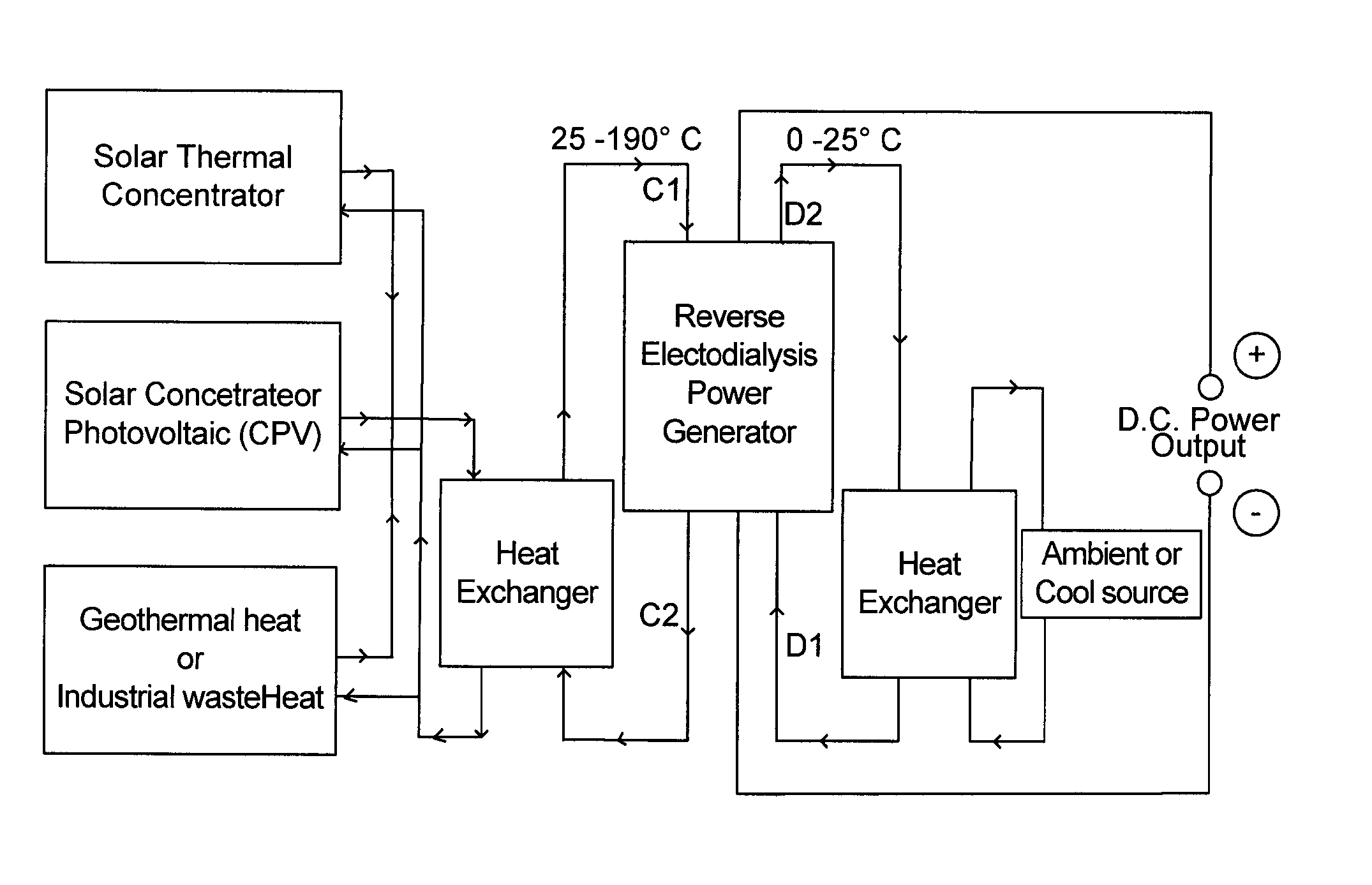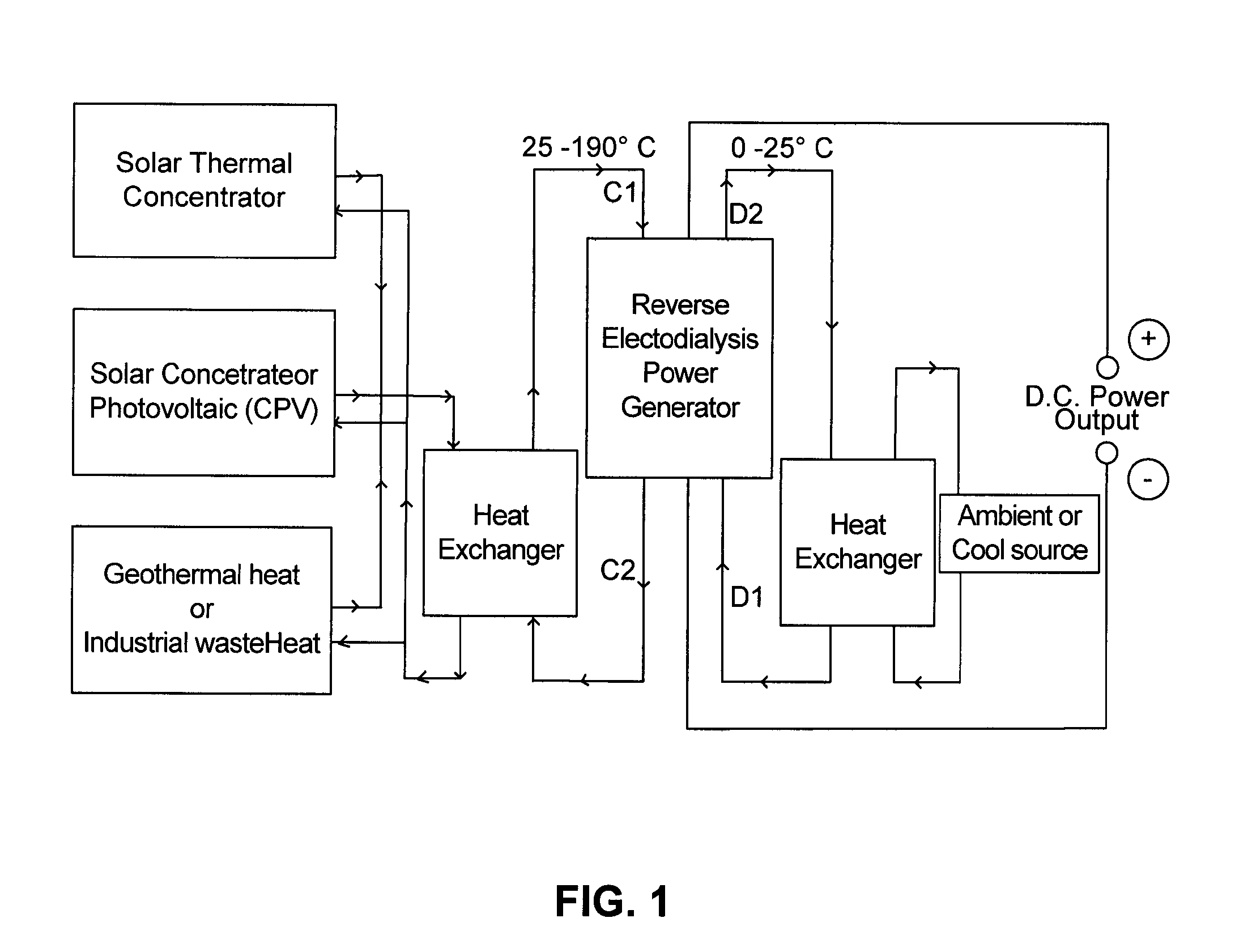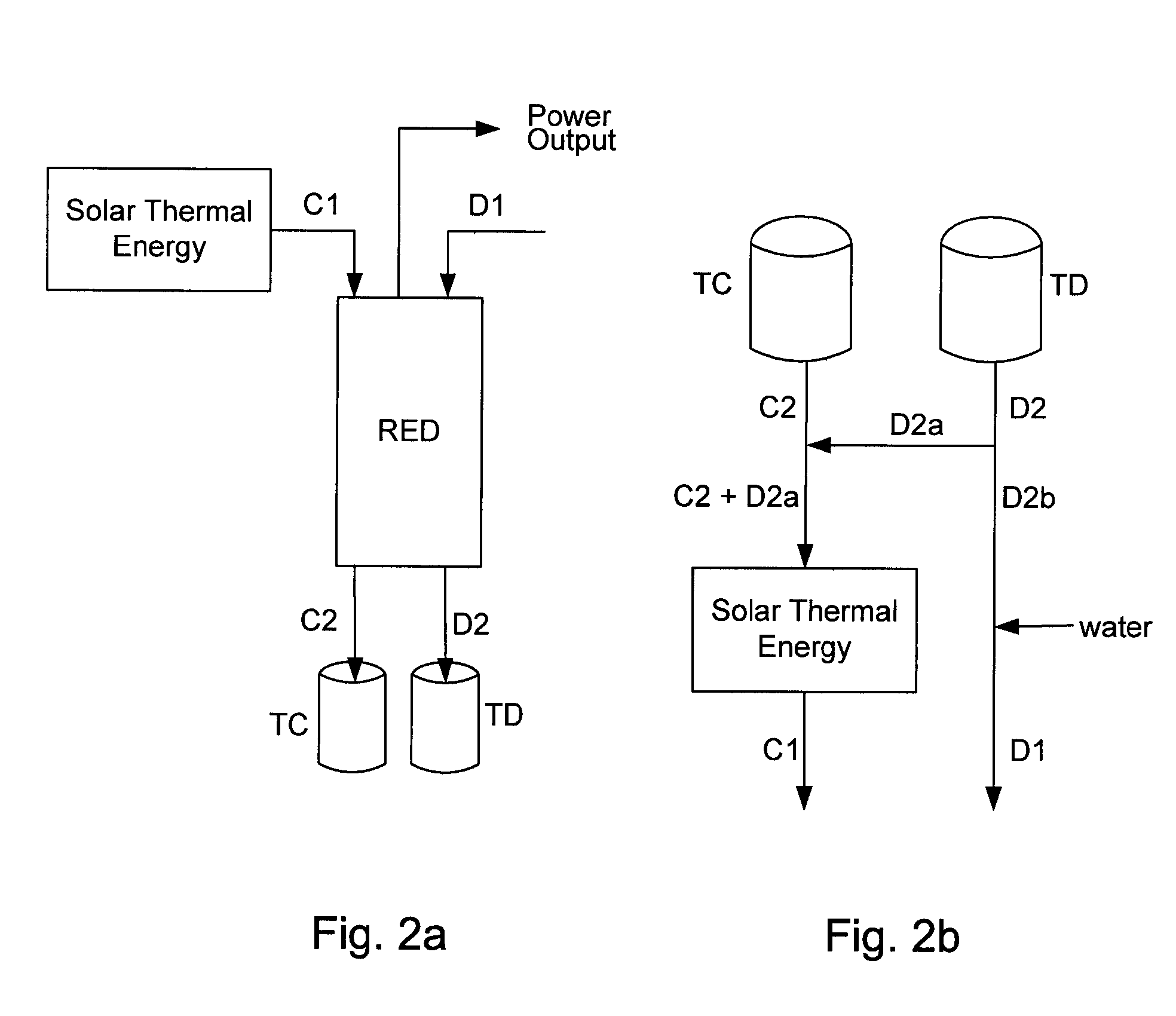Thermal energy conversion to electricity
a technology of thermal energy and conversion to electricity, applied in thermal-pv hybrid energy generation, greenhouse gas reduction, sustainable manufacturing/processing, etc., can solve the problems of limited efficiency, lower process efficiency, and limited temperature by mechanical properties and costs, and achieve the effect of improving the net efficiency of the process
- Summary
- Abstract
- Description
- Claims
- Application Information
AI Technical Summary
Benefits of technology
Problems solved by technology
Method used
Image
Examples
example 1
[0041]Dilute (0.017 M) and concentrated (0.51 M) aqueous KCl solutions were mixed using one cation-anion cell pairs separated by 250□ gaskets and spacers. The anode and cathode rinse was 0.05 M K3Fe(CN)6+0.05 M K4Fe(CN)6. A maximum power output of 0.36 Watts per square meter (W / m2) was observed.
example 2
[0042]The same experimental conditions as in Example 1 were used except for the use of spacers with increased porosity. The porosity was increased from 51% to 70% by selectively removing small sections of the spacer. A maximum power output of 0.53 W / m2 was observed.
example 3
[0043]Dilute (0.017 M) and concentrated (0.51 M) aqueous KCl solutions were mixed using three cation-anion cell pairs separated by 125μ gaskets and spacers of 75% porosity. The anode and cathode rinse was 0.05 M K3Fe(CN)6+0.05 M K4Fe(CN)6. A maximum power output of 1.0 Watts per square meter (W / m2) was observed.
[0044]The present invention results in an increase in the overall efficiency of solar concentrated photovoltaic power (CPV) plant due to the additional power generated by this hot reverse electrodialysis system. The overall efficiency of concentrated solar power (CSP) generation in a solar power tower system employing steam turbine generator increases by this disclosed process due to the additional power generated by this hot reverse electrodialysis system. Likewise, the overall efficiency of concentrated solar stirling power generator increases by this disclosed process due to the additional power generated by this disclosed process of waste heat utilization. Also, the overa...
PUM
 Login to View More
Login to View More Abstract
Description
Claims
Application Information
 Login to View More
Login to View More - R&D
- Intellectual Property
- Life Sciences
- Materials
- Tech Scout
- Unparalleled Data Quality
- Higher Quality Content
- 60% Fewer Hallucinations
Browse by: Latest US Patents, China's latest patents, Technical Efficacy Thesaurus, Application Domain, Technology Topic, Popular Technical Reports.
© 2025 PatSnap. All rights reserved.Legal|Privacy policy|Modern Slavery Act Transparency Statement|Sitemap|About US| Contact US: help@patsnap.com



